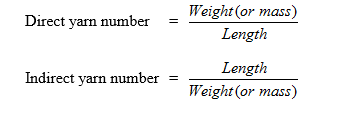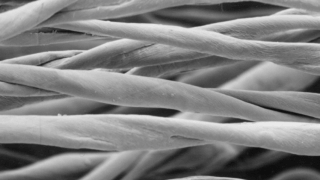Textile Yarns
Learn about Textile Yarns and Yarn Numbering.
Textile Yarns 101
A textile yarn is a continuous strand of staple or filament fibers arranged in a form suitable for weaving, knitting, or other form of fabric assembly. Also, a yarn is a textile product of substantial length and relatively small cross-section consisting of fibers with twist and/or filaments without twist. The yarn can be twisted with one or more yarns to create added value or aesthetics. Traditionally, yarns have been constructed of fibers of finite length called staple fibers. Today, continuous filament yarns are also used to construct yarns.
Filament yarns tend to be smoother, more lustrous, more uniform, harsher, and less absorbent. Spun yarns have a hairy surface, are more uneven in appearance, have lower luster, are softer, and more absorbent. Spun yarn is the yarn of choice in many woven and knitted fabric products. The short fibers can be natural fibers such as cotton where the fiber grows in short lengths. But they can also be synthetic fibers such as polyester that are manufactured in a continuous length and then cut into shorter staple lengths.
This document will discuss how yarns are formed. It covers fiber preparation and spinning for cotton and blends of cotton. Also covered is the production of synthetic filaments and their conversion to tow and how the tow in turn gets cut into short fibers. Then the steps in the processing of cotton and cotton/synthetic blended spun yarns and the various spinning systems used will be addressed.
To view the full 101 guide to Textile Yarns, please click on the button below.
Yarn Numbering Systems
Textiles are often sold on a weight basis and consequently it is natural to express the size of “thickness” of a yarn in terms of weight (or mass). There are two basic ways in which this may be done. These are: (a) by saying how much a given length of yarn weighs, or (b) by saying what length of yarn one would have in a given weight. Generally these are known as the direct and indirect systems of yarn numbering, respectively. In other words:

It will be noted that one is the inverse of the other. In the first case, the number gets larger as the yarn or strand gets coarser. In the second case, the number gets smaller as the yarn or strand gets coarser.
Each system has its advantages and disadvantages and each has found areas in which, by custom, it is used. It so happens that because long, thin strands are usually involved, the length figures are usually large and the weight figures are small. Consequently, the yarn numbers would get impossibly large or impossibly small unless special units are used. The following paragraphs will explain a selection of the most important sets of units used. A summary is listed in Table 1 on page 6.
Please click the button below to learn more about Yarn Numbering Systems!


